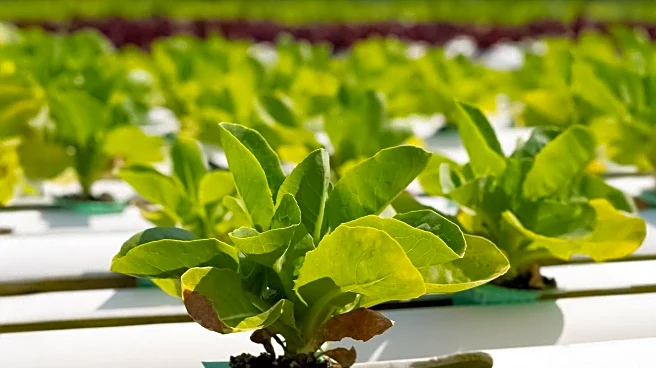What's Happening?
Urban agriculture is emerging as a key strategy to improve food security in cities, with the potential to provide up to 20% of fresh vegetable needs by 2025. As urban populations increase, traditional food supply chains face stress from climate change and political instability. Urban farming offers a solution by shortening the distance between production and consumers, enhancing the availability of nutritious food. Key strategies include rooftop gardens, community gardens, and vertical farming, which can significantly boost local food supplies and reduce transportation emissions.
Why It's Important?
Urban agriculture addresses food security by increasing access to fresh, affordable produce, particularly in food deserts. It reduces reliance on disrupted supply chains and promotes dietary diversity, contributing to lower rates of diet-related diseases. Economically, it creates jobs and empowers marginalized groups, fostering social inclusion and resilience. As cities grow, integrating urban agriculture into planning is vital for sustainable food systems and environmental resilience.
What's Next?
Cities must align policies and incentives to support urban agriculture, including land designation and technology adoption. Education and outreach to urban farmers are crucial for successful implementation. Collaboration between urban and rural producers can enhance resilience and knowledge sharing, ensuring sustainable food systems for future generations.
Beyond the Headlines
Urban agriculture not only improves food security but also contributes to environmental sustainability by reducing food miles and emissions. It fosters community engagement and active citizenship, essential for resilient urban systems. The integration of technology, such as satellite monitoring and blockchain traceability, further strengthens urban food systems.











